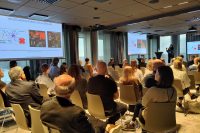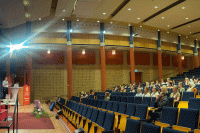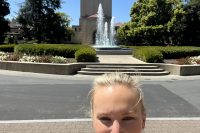There is effective protection against hip fracture for the many elderly people whose skeleton is declining in strength, as a side effect of cortisone treatment. If patients receive the osteoporosis medication alendronate, it reduces the risk of hip fracture by 65 percent, as a study published in The Journal of the American Medical Association (JAMA) reveals.
“The low number of people who receive this protective treatment is often due to a lack of knowledge and procedures in this area within the healthcare system,” says Mattias Lorentzon, a professor of geriatric medicine at the Sahlgrenska Academy’s Institute of Medicine, and a senior physician at Sahlgrenska University Hospital.
Hip fractures usu ally affect older people and often lead to disability, a worse quality of life and premature death. For many aged 80 or over, the combination of extensive surgery, immobility and long hospital stays, with a risk of infection, blood clots and confusion, is simply too much.
Cortisone treatment to counteract inflammation conditions such as rheumatoid or muscular arthritis, meanwhile, doubles the risk of hip fracture. This latest study has revealed, however, that just one in four patients treated with cortisone receive the osteoporosis medication alendronate.
Significant Reduction of Risk
The aforementioned study was made possible by interlinking several registers in Sweden, namely Senior Alert, the patient register, the drug register, the cause of death register and the population register.
From a base group of over 400,000 elderly patients, 1802 were prescribed alendronate after starting treatment with the cortisone preparation prednisolone in tablet form. They had been taking the drug for at least three months, at a dosage of at least five milligrams per day.
The group with matched controls, which also consisted of 1802 people, took prednisolone tablets, but did not receive the protective alendronate treatment.
Of those who took cortisone tablets, but did not receive protective treatment, 4.1 percent had broken their hip after around 15 months (1.3 years). In the group that also received alendronate (the protective substance), the equivalent figure was 1.5 percent. This represented a significant reduction in the risk, i.e. 65 percent less, covering other fractures too.
“If a patient receives the protective treatment, the risk of suffering a new fracture, and in particular the new hip fractures that we are really keen to prevent, reduces dramatically,” says Kristian Axelsson, co-author and doctoral candidate, who also works as a resident physician in the orthopedics department at Skaraborgs Hospital.
“The number of patients receiving the treatment is quite low at present, but we are hoping this study will mean more prednisolone patients will receive the fracture-preventing treatment,” he continues.
Really Helps to Avoid It
Most hip fractures occur in older women. The average age in the study was around 80 years, and seven out of ten of the patients were women. There was no increased risk of side effects linked to the alendronate treatment, and for Mattias Lorentzon, it is clear what the study has achieved.
“This drug costs around SEK 200 per person per year, which is nothing really, thanks to the fact that it’s a generic drug for which no patent is outstanding. It’s unlikely any company will invest large amounts of money on a randomized trial to investigate whether it prevents hip fractures in cortisone patients. It perhaps wouldn’t be too ethical either, because there is already indirect evidence that it should work,” he tells us.
“That’s why we wanted to look at the question at issue as part of a major retrospective observational study. The data we now have really supports the argument that it provides effective protection against hip fracture, one of the most costly complaints within the Swedish healthcare system, and something that many people of this age die from. It really helps if you can avoid it,” he concludes.
Authors: Mattias Lorentzon; mattias.lorentzon@medic.gu.se and Kristian Axelsson; kristian.axelsson@gu.se
Portrait: Mattias Lorentzon (image: Elin Lindström Claesssen) and Kristian Axelsson (image: Skaraborgs Hospital)
MARGARETA GUSTAFSSON KUBISTA










